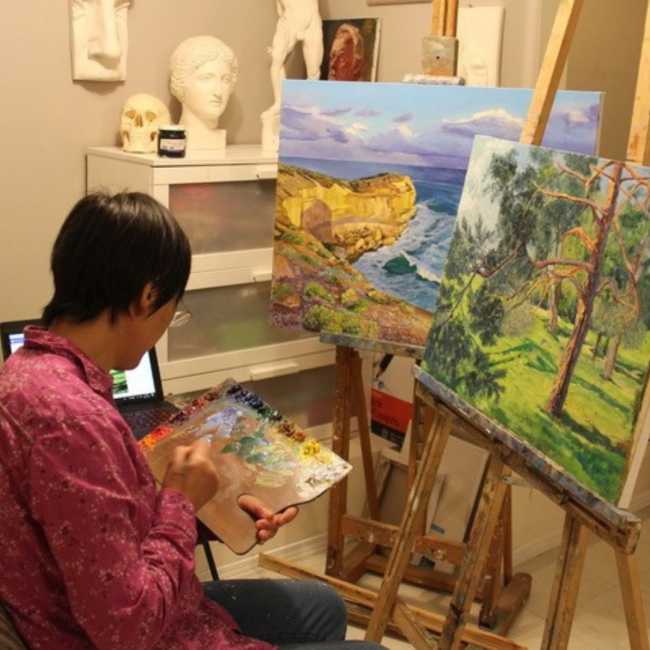Phone: (647) 894 7706

When it comes to oil painting classes, understanding the basics of brush strokes is essential. Brush strokes are not just simple movements of the hand; they have the power to bring life and depth to a painting. Each stroke has its unique effect, allowing artists to create different textures and visual elements on their canvas. In this blog post, we bring you detailed information on the types of brush strokes one gets introduced to in oil painting classes.
This technique involves using a flat brush with firm bristles to create smooth and even strokes on the canvas. To achieve this effect, artists typically load their brushes with paint and then apply it to the canvas in long, sweeping motions.
Round brush strokes are a versatile technique that can be used to achieve various effects in oil painting classes. By using a round brush, artists can create smooth and controlled lines, as well as add texture and depth to their artwork.
Filbert brush strokes are a popular technique used in oil painting classes. This type of brush has a flat, oval-shaped bristle head that comes to a point at the tip. It combines the versatility of both flat and round brushes, making it ideal for creating various textures and blending colours.
Fan brush strokes are a popular technique in oil painting classes that can create dynamic and textured effects on the canvas. This unique brush stroke involves using a fan-shaped brush to create soft, feathery marks with varying degrees of thickness and transparency.
The Impasto technique is a popular and expressive method used in oil painting classes. It involves applying thick layers of paint to create texture and dimension on the canvas. This technique allows the artist to build up layers of paint, giving their artwork a three-dimensional quality.
VR School of Art is a renowned art school in Toronto where you can learn from the best in North York, Ontario. Speak to us today to learn about our courses for kids and adults.